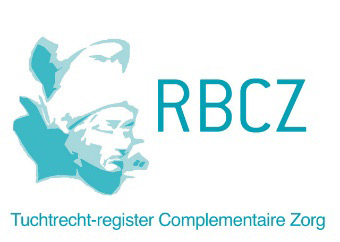It is not often that a tree is sited in a location where it has sufficient space to fully express itself as it ages. Trees tend to have a much longer lifespan than we humans do, and only gardeners with a long-term vision know which specimens fit best which locations. After that, a tree’s survival is in the hands of nature and of future generations. Every so often, depending on the whim of the time, they are chopped down, and we miss out on the powerful blessings and healing potential of these ancient specimens.
The English landscape garden is a style of garden or park which emerged in England in the early 18th century. Its informal, natural genre was in clear opposition to the formal, symmetrical French garden which had become fashionable in Europe in the century before. The English landscape garden offered an idealized view of nature. It was designed to recreate an idyllic pastoral landscape, usually including a lake with elegant bridges, sweeps of gently rolling lawns set against groves of trees, and recreations of classical temples, Gothic ruins, or any other folly of the times. By the end of the 18th century, the English landscape garden had grown to be a major influence on the landscaping of public parks and gardens around the world. Many are still popular attractions today.
A lake dating back to the last ice age
The Mere is an award-winning park with a beautiful lake (‘mere’ in old English) on the edge of the medieval market town of Ellesmere (England). This lake was formed by the receding glaciers during the last ice age some 12,000 years ago. It is the result of a large block of ice creating a deep hole in the glacial moraine.
The lake has been put to good use over the years. From fishing in pre-history, then for defence during the 11th century, followed by industrial exploitation in the 17th century, and ultimately for recreation purposes. During the 19th century the area surrounding it was developed as the ‘Cremorne Gardens’ and became the ‘pleasure grounds’ to an aristocratic family. Trees were planted for their form and beauty. The subsequent owners of this parkland transferred ‘The Mere’ by deed of gift ‘for the benefit of the public’ in 1953.
I love the pure and uplifting energies of The Mere, and over the years I have been lucky to visit it on several occasions. The spectacular Blue Atlas Cedar has always been one of my favourite trees here. It has a humbling aura of superb majesty, combined with exceptional grace and beauty, and its superb location makes it a pearl in the landscape.
Native to Morocco and Algeria
The Blue Atlas Cedar is of light blue-grey colour and is native to the Atlas Mountains of Algeria and Morocco. These powerfully straight trees can be found between 4,000 and 7,000 feet high (1.220 and 2.133 metre) and are the most cold-hardy of all cedars whilst they can also withstand the hot African sun. They were discovered by the English botanist Philip Barker Webb in 1827.
Almost two centuries later, during the warm summer of 2018, I woke up one morning with a sudden longing in my heart to visit the specimen in Ellesmere and ask it for an essence vibration. I must have needed it for the transformational process I was then going through.
As we approach the tree, its size strikes me again, it must be at least 82 feet (25 metre) high. The exact age of this ‘Cedrus atlantica “Glauca”’ is not known, but most likely the seed was put to earth in the Victorian age (1837-1901).
Its overall health strikes me even more
The overall health of this majestic giant strikes me even more. Over the centuries, this specimen has been given the space it needed to fully express itself and it happily took all it needed. It radiates a powerful life force rather than the frustration and subsequent deformities and diseases of having to fit in ‘a box’.
Because cedars while young tend to look more like a piece of modern art sculpture than a tree, the tendency is to locate them in spots where they simply do not have enough room to develop as they age. Over the decades, their pyramidal shape then tends to transform into a flat top with widely spread horizontal branches. The gardener who chose to sow the seed in Ellesmere, was wonderfully inspired and fortunately the next generations respected this magnificent tree’s needs for space. The width of its lower branches easily reaches its dizzying height.
As we approach, we are greeted by the 1-inch-long evergreen needles that host the cones. With grace, it grants us access into the shade of its umbrella of branches. And there we see its core, firm and perfectly aligned between heaven and earth, feeding endless branches to its top.
The towering tree seems to have been waiting for us. After only a few minutes in the powerful but gentle embrace of this around 175 years old cedar, it offers up its vital essence with generosity, as a vibration to be used for healing. It comes with the name ‘Life force’.
How this essence vibration supports
This vibration reflects the healthy essence of this superb giant and will help you to embrace your life force to the full, and also the ways by which it wants to express itself.
This essence vibration is excellent in helping you to unleash your vitality, especially there where you have been holding yourself back due to your upbringing or other cultural and educational circumstances. Could it be that you have an addiction that is limiting your life force? Addictions are a reflection of inner struggles and prevent life force from flowing freely. If you have a dependency, face it, and unchain yourself from this habit that keeps you small. Now is the opportunity to do so. NOW is the moment.
Basically, this essence vibration supports you in all that the Blue Atlas Cedar tree in Ellesmere embodies. It connects you with your vitality. It allows you to grow beyond limitations. It invites you to set boundaries for those who prefer to see you smaller than you are. Why do you think the cedar tree has needles?
The essence of Life force gives you the opportunity to claim your space, in order to breathe, to expand and flourish, like our cedar tree did and still does by growing taller and wider.
If needed, ‘replant’ yourself in a better location or social environment for you to blossom.
Allow your spine to find a more upright position, like the upright cedar’s trunk, reflecting worthiness and in perfect alignment between heaven and earth.
By allowing yourself to live your true potential, instead of suppressing important life force due to addictions or internalised conflicts from when you were a child, you will gain a good or at least a better health condition. If you give yourself the space that the gardeners offered the Blue Atlas Cedar tree in Ellesmere, you will shine and radiate health and happiness.
By allowing your life force to flow fully, you will easily stand firm in all weather conditions, no emotion will be too difficult to deal with or lead to an addiction. The DNA of the ‘Cedrus atlantica “Glauca”’ knows how to cope with the extreme cold of the mountains and the proximity of the African sun. You may trust that this potential is embedded in your ‘Homo sapiens’ DNA as well. Aren’t you the result of the tenacious, gigantic life force of all your ancestors?
Now is the time to fully embrace your place on Earth.
Be a monument to yourself
Be the monument to the life force of your ancestors
Be a monument to society
Be a monument to Mother Earth, the keeper of all DNA
May you stand tall and firm like the Blue Atlas Cedar Tree in Ellesmere, continuing to root and expand, and sending endless blessings into the environment.
With my heartfelt love,
Harriët







